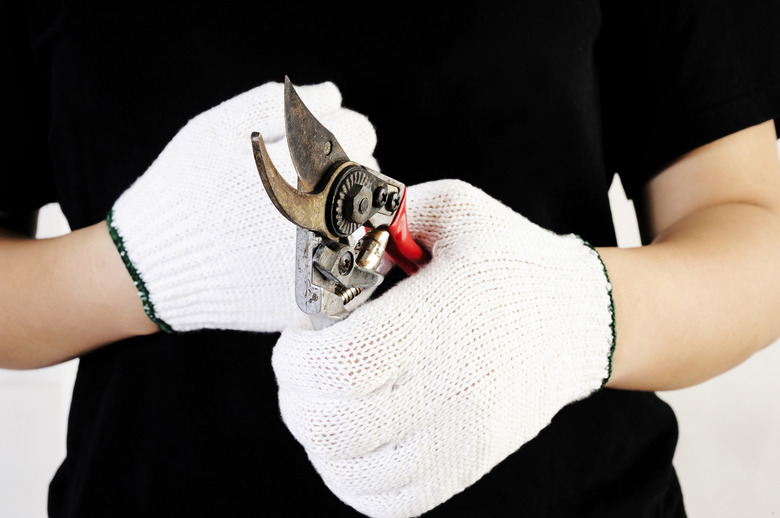How To Care For A Buddha Belly Plant
Things Needed
- 24-8-16 fertilizer
- 0.5 percent acetamiprid insecticide
- Gloves
- Rubbing alcohol
- Pruning shears
A round, swollen stem base gives Buddha belly plant (Jatropha podagrica) its name. Growing outdoors in U.S. Department of Agriculture plant hardiness zones 10 through 11 and indoors everywhere, this succulent thrives in full sun and dry soil, and requires little care, provided its winter dormancy needs are met. Also called bottleplant shrub and Australian bottle plant, Buddha belly plant grows 18 to 24 inches tall and 10 inches wide, and bears butterfly-attracting, coral-red flowers with yellow stamens year-round. Its stems are swollen, knobbly, twisted and covered in bristled scars, and they also contain a sticky, irritant sap. All parts of Buddha belly plant are poisonous.
Step 1
Water Buddha belly plant in spring when new shoots appear, and throughout the growing season when the soil is dry to a depth of 2 inches, applying water until it flows through the drainage holes if growing the plant in a container.
Step 2
Mix 1 tablespoon of 24-8-16 fertilizer in 1 gallon of water for Buddha belly plants growing in the ground and 1/2 teaspoon per 1 gallon for houseplants, or according to the manufacturer's instructions. Apply the fertilizer monthly during the growing season after new shoots appear in spring.
Step 3
Check the Buddha belly plant's leaves for scale insects, which look like tiny shells on stems and the undersides of leaves, and white patches similar to cotton wool, which are a sign of mealybugs. Apply a 0.5 percent acetamiprid insecticide spray diluted at a rate of 1 1/2 fluid ounces per 1 gallon of water, or according to the manufacturer's instructions, at the first signs of infestation. Hold the sprayer 8 to 12 inches away from the plant, and spray the upper and lower leaf surfaces and stems just until the foliage is wet. Reapply after one to four weeks if the infestation continues, but don't apply more often than five times a season.
Step 4
Stop watering and fertilizing Buddha belly plant when its foliage withers and dies in fall.
Step 5
Disinfect pruning shears by wiping the blades with rubbing alcohol and put on gloves before pruning Buddha belly plant in late winter or early spring. Prune dead or diseased shoots, crossing shoots, and shoots that spoil the overall shape of the plant, such as those growing at an odd angle. Disinfect the pruning shears again after use.
Tip
Grow Buddha belly plant indoors in well-draining potting soil, such as a 50/50 peat moss and sand mix, in a pot with drainage holes that's just large enough to accommodate the root ball.
Buddha belly plant seed pods explode when the seeds are ripe, launching them several feet away. To harvest the seed, remove the pods when the skins are tan brown, or tie brown paper bags over the pods with string and wait for them to explode.
Warning
Buddha belly plant is invasive in some areas. Remove seed pods before they ripen to prevent self-seeding. Don't grow Buddha belly plant in areas accessible to children or pets, to avoid danger from poisoning.
